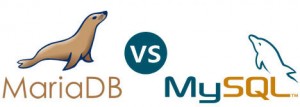
As you may know by now, since the acquisition of Sun Microsystems by Oracle in 2009 for $7.4 billion, there has been some uncertainty in the industry on the future of MySQL which Sun Microsystems itself acquired for $1 billion in 2008. Even as Oracle professed to provide the same level of support and development effort for the future of MySQL, many within the open source community remained pessimistic. One such pessimist was the father of MySQL, Michael “Monty” Widenius, who forked the MySQL code the day the Sun Microsystems acquisition was announced.
Widenius stated, “Many of the original MySQL core developers, including me, didn’t believe that Oracle would be a good owner of MySQL and we wanted to ensure that the MySQL code base would be free forever.” He cited a few examples to show his initial assumptions since correct:
– there has been a sharp increase in license and support fees including the license for MySQL OEM being higher than Oracle Express
– the MySQL documentation was never made open source
– most of the original MySQL developers have left Oracle
Widenius and many other MySQL developers started a company, Monty Program Ab, for the new MySQL, MariaDB. MariaDB offers a drop-in replacement for MySQL, and Widenius claims that Maria DB 5.5 has everything that MySQL 5.5 Enterprise has and many additional features. He also states MariaDB does not depend on MySQL for any future development and that almost all the original MySQL original core engineers, architects, and MySQL optimizer experts are now working on MariaDB.
In fact, Fedora, openSUSE, and Slackware have already switched over to MariaDB as the default database install on the Linux distro. SUSE Linux Enterprise and Red Hat Linux Enterprise are to follow in the next releases. Last year, Red Hat’s Fedora project manager, Jaroslav Reznik, stated, “Recent changes made by Oracle indicate they are moving the MySQL project to be more close. They are no longer publishing any useful information about security issues (CVEs) and they are not providing complete regression tests any more, and a very large fraction of the MySQL bug database is now not public.”
Oracle likely tried to persuade Fedora not to make this switch as can be seen by a post by Oracle interoperability architect, Andrew Riston, on the the Fedora developer mailing list:
“Fedora should integrate MySQL 5.6. Switching to MariaDB would be going backwards, as their releases usually lag by at least 6 months. The differences between MariaDB 5.5 and MySQL 5.6 are quite significant, with major improvements in both performance and stability, as well as additional features and improved security.
With hundreds of development and QA engineers, including MySQL veterans and fresh talent Oracle has produced the most stable, secure, and scalable releases of open source MySQL ever. We are ready to help integrate and package the latest and best-tested version of MySQL in Fedora, including becoming the package maintainer (same as we do with Ubuntu).
15 years of contributing to the Linux kernel, 8 years developing InnoDB, and now 3 years leading MySQL represent a track record that speaks for itself. Fedora’s corporate sponsor and Oracle do compete in the Linux support business, but the database choice for Fedora should only focus on the merits and the quality of the MySQL code.”
In any case, MySQL, is still the #2 most popular database according to db-engines.com with Oracle as #1 and Microsoft SQL Server as #3. However, MariaDB is picking up steam as Linux distros and some very influential companies like Google and Wikipedia make the switch from MySQL to MariaDB. MariaDB will likely pick-up significant user base in the following years. Just last year it was ranked #35, and, today it has already moved-up to #28.
Obviously, it will be quite some time if it hopes to displace MySQL for the #2 spot as there is a huge install base for MySQL. The key will be the ease to transition which shouldn’t be an issue as MariaDB is forked from MySQL. I recently tried it on an openSUSE system and had no issues applying my knowledge of MySQL.



 Twitter
Twitter LinkedIn
LinkedIn Youtube
Youtube RSS
RSS